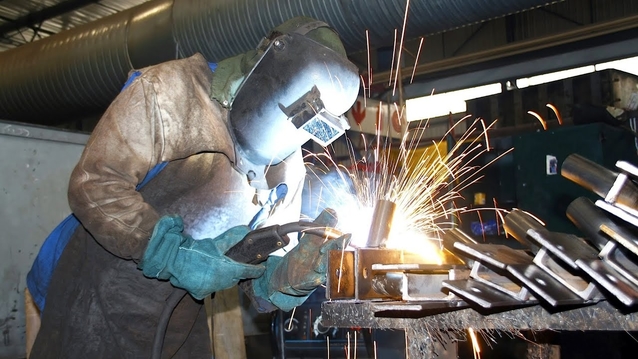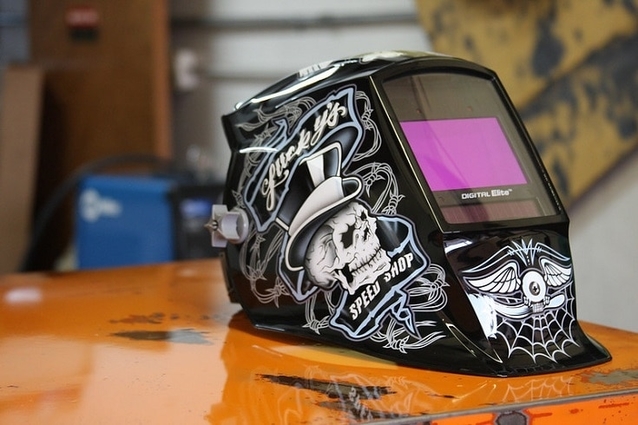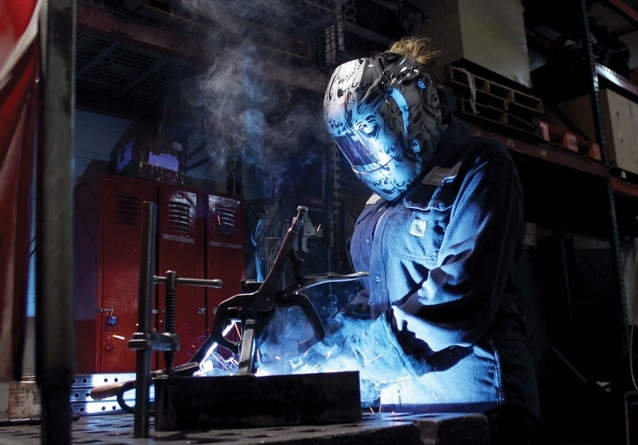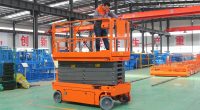Welding Helmets Are Important: Choose the Right One!
It’s probably safe to say that very few people understand the importance of eye and facial protection more than welders.
The eye soreness and discomfort caused by unprotected exposure to the ultraviolet (UV) and infrared (IR) rays emitted when welding is commonly called arc eye. For laymen, it’s the irritating equivalent to getting sunburned eyes. As painful as it sounds, it’s not even the most immediate danger that welders face.
The complex cocktail of hazardous fumes created by the release of chemicals from molten metals is another ever-present source of eye and facial discomfort. The greatest dangers, though, come from the geysers of hot incandescent particles produced when welding, and the endless showers of metal shavings before and after the welding.
Some injuries are transitory – and anyone who welds is very much aware that many of them simply go with the territory. But make no mistake: persistent exposure to any, or all of these, can also lead to permanent injury or blindness. Fortunately, though, welders have some good alternatives.
Proper protection

Let’s be honest: welding, like any activity involving hot metal, has inherent risks. Risk, however, doesn’t have to incur an overt danger which is why proper eye and facial protection are so critical when welding. Appropriately rated welding helmets and goggles are must-have bits of protective kit for any activity where intense heat is used in metal fabrication regardless of whether it’s welding, brazing, or cutting.
Australian Standards (AS) AS/NZ1338 and 1337 outline the requirements of use of helmets as personal protective equipment for welders. Any welder is aware that anytime they pick up a torch this basic equipment is going to be their first line of defence against:
- Harmful UV and IR radiation exposure;
- Burns from chemical and metal fumes; and,
- Injuries from hot flying or falling particles.
Given the range of welding and cutting processes in fabrication (MIG, TIG, arc, etc.), it’s not surprising that changes in those processes have contributed to just how much more effective helmets have had to become to protect welders. And because the extents of exposure between the processes vary, especially the UV and IR dosages, helmets have also had to change to allow welders to move between processes without having to change helmets too.
Fortunately, modern welding helmets that are adaptive at shielding welders from light, heat, and chemical exposure have largely replaced the handheld and flip-front shields historically used in fabrication. There’s one helmet innovation in particular that has evolved to shape how helmets are constructed altogether.
Auto darkening helmets

Aside from their wrap-around coverage, auto darkening helmets are designed to detect within milliseconds (as quickly 1/10,000 of a second) the exact moment a welder strikes an arc on a piece of metal, and restrict the amount of light passing through its viewing area. The viewing area itself is electronically controlled, and the exact amount that the viewing lens darkens by once the arc is struck – and stays dark afterward – is determined by welder-selected preferences.
Depending on the model of helmet, a welder can have a viewing area that provides up to a complete 180 degrees of welding protection. That’s a perfectly panoramic view of the working area that’s fully protected from any dangerous exposure. The viewing lenses of these helmets are comprised of three components that are encased in individual inner and outer protective lens:
· A UV / IR filter
This multi-layered filter, composed of a variety of metallic substrate layers sits on the outside of the viewing lens, and allows variable ranges of light to pass through the lens while blocking heat.
· A polarization filter
This filter variable darkens the light passing through the lens, effectively reducing the intensity of light that passes through each filtered layer.
· A liquid crystal cell
Through the use of sensors, a liquid crystal (LC) cell electronically provides the instantaneous reduction and control of the light passing through the filters, effectively altering both the quantity and the sensitivity of the light that’s reaching the welder.
It’s because of this intense filtering range that auto darkening helmets are able provide eye and facial protection across the full range of light and shades produced by each distinctive welding process, including:
- UV protection setting: up to shade DIN 15
- Variable dark shade setting: DIN 9 -13
- Light shade mode setting: DIN 4
Regardless of the process, an auto darkening helmet can be counted on to reduce harmful exposure and injuries in ways that previous generations of welders couldn’t have imagined.
Other benefits

While eye and facial protection are the real goals of auto darkening helmets, there are other advantages they have over fixed shade helmets. Quite simply, welders who use auto darkening helmets are inclined to be more productive by benefitting from:
· Perfect shade
Welders spend less time replacing and adjusting helmets and helmet lenses to match the process when an auto darkening helmet does it automatically.
· Perfect sensitivity
Welders don’t have to worry about their eyes not adjusting to fixed lenses when the brightness and darkening delay of auto darkening lenses can be adjusted to match their eyesight.
· Perfect control
Welders spend less time guessing where their welds are starting, and then stopping to check them, when they can continue to look at it at all times with an auto darkening helmet.
The final word
At the end of the day, there’s no way to overemphasize just how important eye and facial protection are for the personal safety of welders.
There are plenty of different welding helmets on the market, but you can expect the one that’s safest will also be the one with the biggest advantages in versatility and productivity.
If you’re a welder, don’t hesitate to speak with a retailer who has a full range of helmets and accessories that’ll keep you safe while you’re plying your trade. It’s an investment that you won’t regret!



